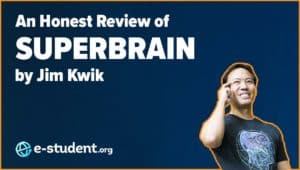- Detailed notes provide a rich resource to revisit and can be good for studying for exams or engaging in long-term projects – but may lead to surface-level processing of information and information overload.
- Shorter notes require active engagement, leading to more meaningful and critical learning, and can be achieved by prioritizing key concepts, using abbreviations and symbols, taking visual notes, and summarizing.
- If notes end up lacking detail, some strategies that can help include comparing notes with peers, using online resources, and engaging in active review.
- The key to note-taking efficiently is finding a balance that suits individual learning styles and preferences.
Introduction
Note-taking has been established as a vital practice among students and professionals alike. It is an important tool for retaining information and aiding in the learning process. However, one crucial question arises: is it better to make detailed notes, especially when considering both short-term comprehension and long-term retention?
In this article, we will explore the benefits and drawbacks of detailed note-taking and investigate its impact on short-term and long-term learning. Additionally, we will look at suitable note-taking methods and offer tips for overcoming the challenges associated with not having all the details.
Table of Contents
The Laptop Note-Taking Debate
One widely debated topic in the realm of note-taking is the use of laptops. A study highlighted in Scientific American, titled “A Learning Secret: Don’t Take Notes with a Laptop” by Mueller and Oppenheimer (2014), delves into the impact of digital note-taking on learning outcomes. The study suggests that students who take notes by hand tend to outperform their peers who use laptops in terms of conceptual understanding and long-term retention.
The researchers propose that the act of writing notes by hand requires deeper cognitive processing, promoting better comprehension and memory encoding compared to typing on a keyboard. The tactile experience of writing may engage the brain in a meaningful way, facilitating a stronger connection between the information and the learner.
Long-Term Learning: The Case for Detail
With the pros and cons of taking handwritten or typed notes, there is also the debate on the amount of detail one should jot down. When using a laptop for note-taking, some individuals fall into the trap of attempting to transcribe every word spoken during a lecture or meeting. This results in excessively detailed notes. Comprehensive notes provide a rich resource for revisiting and reinforcing knowledge over time. When studying for exams or engaging in long-term projects, having detailed notes allows individuals to delve deeper into the subject matter, solidifying their understanding and making connections between different concepts.

Moreover, well-organized detailed notes can serve as a valuable reference point months or even years after the initial learning experience. They become a personalized knowledge repository, aiding in the retrieval and application of information when needed. Creating detailed notes can also contribute to the learning process if complemented with active engagement and critical thinking.
Short-Term Learning: Less is Often More
When it comes to short-term learning, the level of detail in note-taking can significantly influence comprehension during lectures, study sessions, or meetings. While detailed notes allow for a complete record of information, they can lead to a trade-off between capturing details and actively engaging with the material, lecture, or meeting.
Note-takers may find it challenging to keep up with the pace of the lecture or meeting and process the information while trying to transcribe every word. Multitasking — listening, comprehending, and writing simultaneously— can lead to surface-level processing. Writing down detailed information can also create a false sense of mastery, leading students or professionals to believe that they have understood the material when, in reality, their grasp may be superficial. Furthermore, the human brain has a limited capacity for processing information. When overloaded with excessive note-taking, there may be less cognitive space left for critical thinking, analysis, and making connections between ideas.
Taking shorter notes involves filtering information and focusing on what’s truly important. One ends up listening actively, paying close attention, identifying key points, and making critical connections. By focusing on what resonates personally, the notes created are tailored to individual learning styles and needs, making them meaningful and easy to recall.

Balancing Act: Capturing Essentials
While detailed note-taking has its merits, it is essential to strike a balance between capturing essential information and avoiding information overload. The following strategies can be adopted to achieve this balance:
1. Prioritize Key Concepts
Identify and prioritize key concepts, main ideas, and overarching themes during a lecture, study session, or meeting. Focusing on the most critical information ensures that the notes remain concise while retaining the substance of the material.
2. Use Abbreviations and Symbols
Develop a personal system of abbreviations and symbols to streamline note-taking. This allows for faster recording of information while still conveying the essential meaning. Consistency in these shorthand techniques enhances efficiency.
3. Take Visual Notes

Incorporate visual elements such as diagrams, charts, and graphs into your notes. Visual representations can condense complex information, making it easier to understand and remember. This approach is particularly effective for visual learners.
4. Summarize at the End
Dedicate a few minutes at the end of the lecture, study session, or meeting to summarize the key points. This process reinforces the most critical information and helps solidify understanding. Summarization is a form of active recall, a powerful learning technique.
Suitable Methods for Note-Taking
Choosing the right note-taking method is crucial for effective learning. Different individuals may find success with various approaches, and experimenting with different techniques can help identify the most suitable method. Some popular note-taking methods include:
1. Cornell Method
The Cornell method involves dividing the page into three sections: a narrow left column for cues, a wider right column for notes, and a section at the bottom for summarizing main ideas. The structured format encourages active engagement and review.
2. Mind Mapping
Mind mapping is a visual technique that involves creating a diagram to represent relationships between concepts. It is particularly effective for capturing complex information and understanding the connections between different ideas.

3. Outline Method
The outline method involves organizing notes hierarchically, with main ideas at the top level and supporting details indented below. This method helps learners visualize the structure of the information and facilitates quick review.
4. Sentence Method
The sentence method involves writing complete sentences to capture key concepts and details. It provides a more detailed record of information compared to other methods and is suitable for those who prefer a narrative format.
5. Charting Method
Using tables or charts to organize information is the basis of the charting method. This method is beneficial for comparing or contrasting different elements, making it suitable for subjects with distinct categories.
Tips for Overcoming a Lack of Details
Even with the most diligent note-taking, there may be instances where important details are missed or misunderstood. To overcome these challenges, here are some strategies:
1. Compare Notes with Peers
Collaborate with classmates and peers to compare notes. Each individual may have captured different aspects of the material, and combining perspectives can fill in gaps and provide a more comprehensive understanding. A cloud-based note-taking or word-processing application can facilitate this collaboration.

2. Utilize Online Resources
Leverage online resources such as recorded lectures, additional reading materials, or reputable educational websites. These resources can supplement and enhance understanding, compensating for any missed details during note-taking. If the notes are taken digitally, then hyperlinks to these online sources can easily be incorporated.
3. Engage in Active Review
Actively review and revisit notes regularly. This practice not only reinforces learning but also allows individuals to identify areas where more information or clarification is needed. Use active recall techniques, such as self-quizzing, to strengthen memory.
Conclusion
The key to note-taking efficiently is finding a balance that suits individual learning styles and preferences. Detailed note-taking proves beneficial in both short-term comprehension and long-term retention, provided that one can manage the potential drawbacks of information overload. By integrating these strategies and practices into their approach to learning, students and professionals can optimize their note-taking process, fostering a deeper understanding of the material and promoting success.



